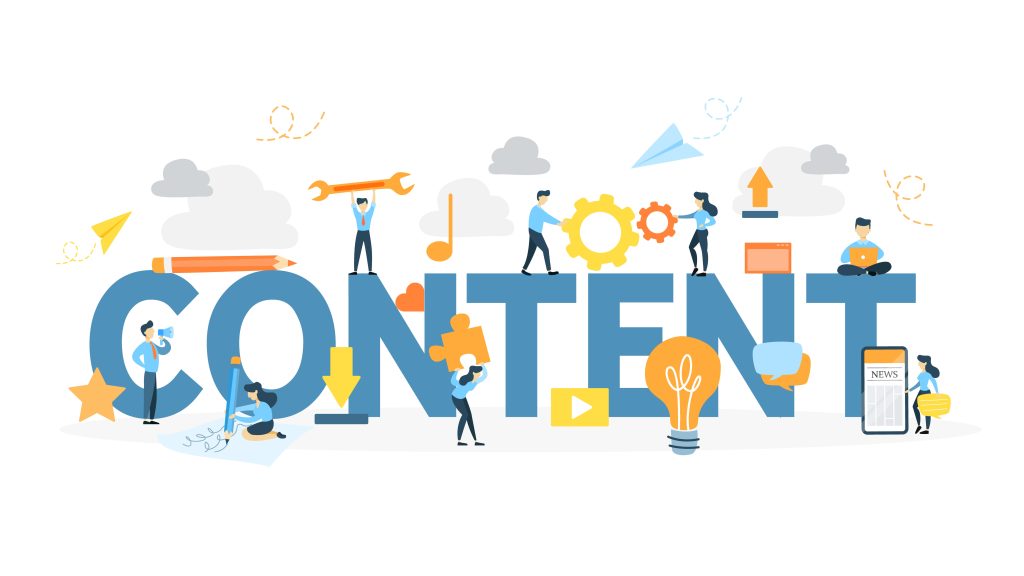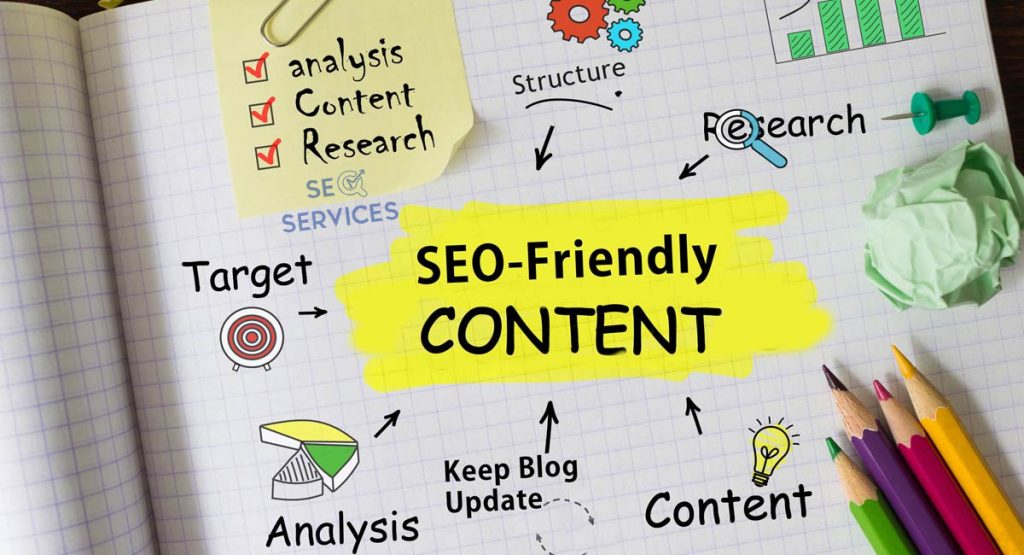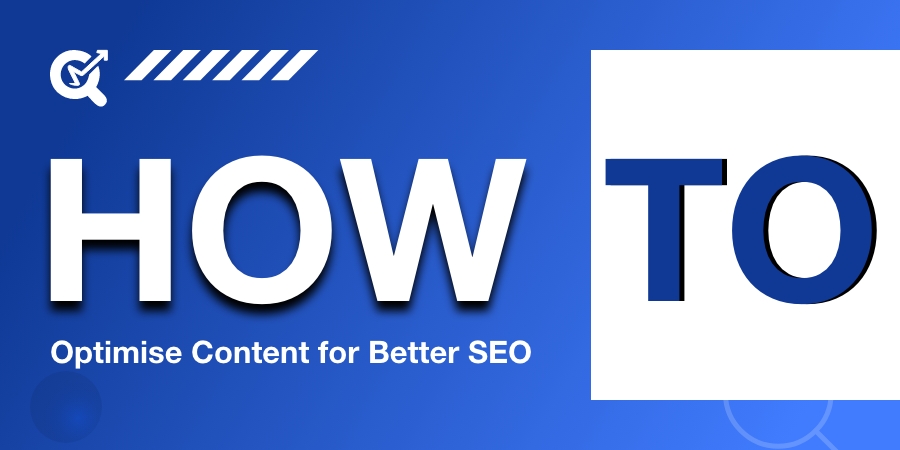Content is one of the most crucial ranking elements, yet unique, well-optimised content is what ranks higher in SERPs. However, optimising content only for search engines doesn’t always make sense. Your content gets search engine friendly automatically when you optimise it for people. You can increase your business’s visibility online by optimising your web pages, including your content. The question is, how to optimise content for SEO so you can rank high in the SERPs?
There’s no need to worry. Let us handle it. This post aims to shed some light on the best practices for optimising your consent for better search engine optimisation. Let’s dive in.
What is Content Optimisation
Content optimisation aims to ensure your content has the best chance of being found in search engines and converted into customers.
The best way to accomplish these goals is to use various tried-and-true techniques, but it takes more than just following instructions. Optimising web content also involves editorial and marketing components.
Why is Content Optimisation Important?

Content optimisation is an essential component of an effective content marketing strategy. A comprehensive SEO content plan will give you more traffic and money and establish you as an expert in your field. Additionally, content optimisation makes you appear higher in Google’s search results. Through efficient content and website optimisation, you can reach your goals.
Best Tips to Optimise Your Content for SEO

Here are some tips on optimising content for your audience and search engines.
Conduct Keyword Research

Whenever you are writing an article, you should conduct keyword research first. Doing keyword research is the best way to find relevant keywords. As soon as you figure out what keywords you’re targeting, you must figure out what kind of content to write.
You’ll get better rankings when you first target a keyword in your content. Your content may rank higher in search results if you use the right keywords. Identify the search terms your audience uses to find content online.
Analyse Search Intent
Someone’s search intent is what motivates them to do a certain search. It is an important ranking factor. Whenever a user searches, they get the most relevant results. Therefore writing content that matches the user’s search intent is so important
How do you determine search intent? One way to figure out search intent is to check the SERPs. Go over the search results after you enter your keyword. Learn which searches Google thinks are most relevant to you.
Title Tag Optimisation
If you want your title tag to improve your SEO rating, make sure it’s intriguing and relevant to the other information on your page. Using relevant keywords in your title will help you demonstrate relevance.
Avoid stuffing your title with keywords. If you have a longer title than 50-60 characters, it will be truncated on the SERP. Your website should have unique titles for each page.
Meta Description Optimisation
You will see a meta description under your meta title whenever you search for something. It doesn’t affect rankings directly. However, it is another opportunity to attract searchers’ attention. Readers and search engines use your meta description to find out what your blog post is about.
Meta descriptions can now be up to 155-160 characters long, which indicates the author wants to provide readers with more information about each search result. You should include your long-tail keyword in your meta description and be reader-friendly (compelling and relevant).
URL Optimisation
Before publishing your blog post, you should check its URL structure. Is it wordy, long, or unrelated to the post’s subject? That’s why you might want to revise it before publishing.
Your website’s URL structures (which differ from individual post URLs) should make it easy for visitors to understand your website’s structure and content. Search engines like URLs make it easy to understand the content on a page for them and users.
Structure Your Content with Header Tags
After deciding on a topic and a list of keywords, you must create a structure and a logical flow. You can use keyword overview and topic research tools to assist with this process. In technical terms, it describes how the H tags are arranged on the page.
According to the research from 2022, 47% of articles with advanced headings (H2 + H3 + H4) are the best-performing. Two reasons make it important:
It is better to divide your topic into subtopics to enhance readability. Your users will find navigating and understanding what you’re offering easier.
The advanced heading structure allows search engines to easily crawl your article because it is segmented into meaningful sections.
Create Internal and External Link
You shouldn’t undervalue the importance of links. Your information seems more credible if you include internal and external links. Search engines and people will also recognise you as an authority on the topic. The links you provide should point to trusted, reputable sources that support your assertions.
Image Optimisation
The more visuals you have, the more likely your readers will read your article. They can also be shared on social media. That’s why you should combine attractive, relevant images with alternative text, called “alt text.” An alt attribute is a description of the image. This alt text appears when a picture cannot be displayed or when the user moves the mouse over it.
Optimising your alt text will help search engines figure out what your pictures are about, increasing your ranking. The alt text should also contain your focus keywords and can be an entire sentence.
Use Small Paragraphs
Writing short paragraphs is a good idea. Each paragraph doesn’t have to start on a new line, but it should have a clear main idea. Don’t make your paragraphs too long. Use formatting tools like bullet points, underlining, and changing the font. It makes your content more interesting for mobile consumers.
Produce Long Form Content
The minimum length of a blog post should be 300 to 500 words. You’re more likely to get likes and mentions on social media when your content is longer. Therefore, longer blog posts will rank higher. In general long-form content is composed of between 1000-7060 words. Since it always doesn’t make sense to produce long-form content.
You must create content that meets your readers’ needs and fulfils their search intentions. To determine whether content length matters, look at the articles that get the most views from your top-ranking content.
Content Optimisation for Mobile Devices
We discovered that more people search on mobile devices than on computers. Google prioritises mobile-friendly results for all important queries searched on mobile devices. In April 2015, Google modified its Penguin algorithm to favour mobile-friendly pages, which has been the case since.
What is the best way to optimise your content for mobile devices? Mobile responsive design can help you to do this. Mobile-responsive websites let bloggers create blog posts with just one URL rather than two. It improves your SEO because traffic won’t be split among your many URLs. Consequently, you will concentrate your SEO power, which makes it easier for Google to rank your piece appropriately.
The Takeaway
That’s all for today’s round-up about optimising content for better SEO. Optimising each piece of content using SEO tactics will give you a lot of free traffic to your site. By following our above guidelines, you will stay ahead of your competitors.





